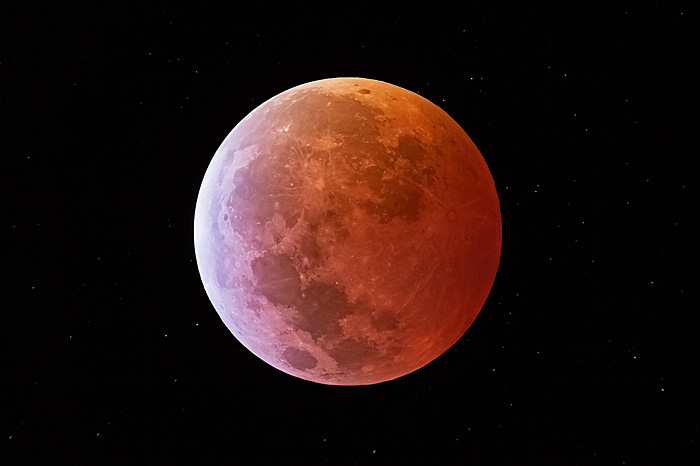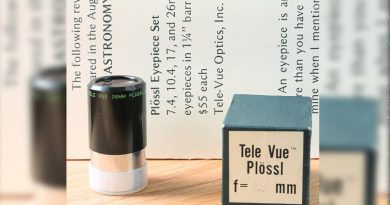August 21, 2017 Solar Eclipse: Inside the SOLAR LAB
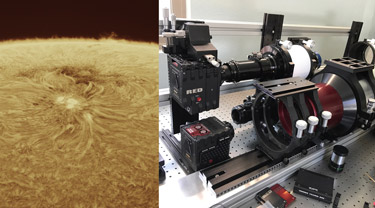
We recently received an interesting letter from Stephen Pizzo, discussing his solar imaging work with Tele Vue Powermate™ amplifiers. Most of the time (90%), he uses our 4x Powermate™ on a Hydrogen-α scope — either a LS152THA (900mm focal length) or LS230THa (1,600mm focal length). This extends the effective focal length of these dedicated solar scopes to 3,600mm or 6,400mm for breathtaking, close-up images of the activity on the Sun’s chromosphere. The choice of scope depends on the seeing conditions. If conditions won’t support the 4x, Stephen employs our 2x Powermate™ with the LS230THa for an effective focal length of 3,200mm. Stephen also notes that he normally uses 3″ to 4″ of extension between the 4x Powermate™ and the imager to get another 0.5x of magnification. The imager itself is very unique: a RED Dragon Epic monochrome 18-megapixel camera — a camera usually associated with the world of professional digital cinema.
He shared the images created with the bigger scope and 4x Powermate™ with us. As you can see below, they are spectacular!
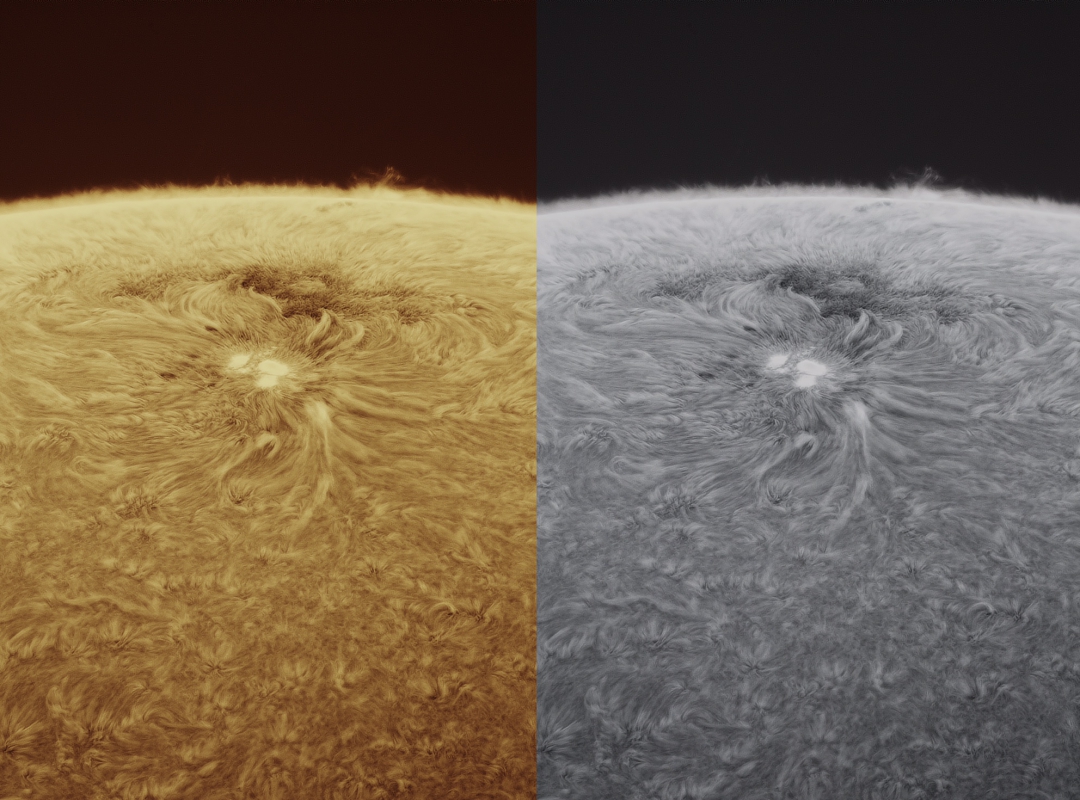
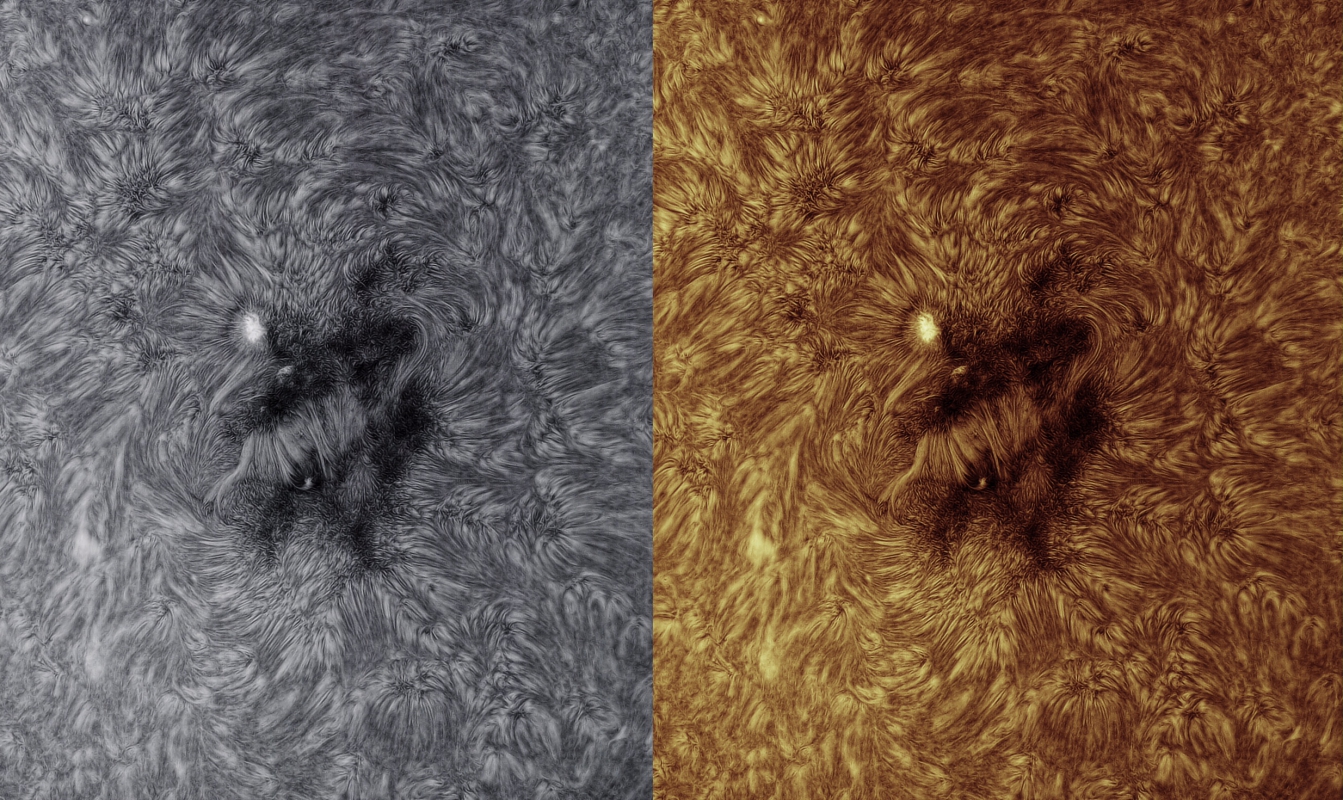
Stephen’s expertise with this equipment caught the attention of NASA, as he’s been contracted with them to live stream the August Total Eclipse event for the NASA EDGE broadcast from “eclipse central” at Southern Illinois University in Carbondale. He’ll be running a portable Solar Lab with three LS230 scopes that will image the event in Hydrogen-α, Calcium k-line, and white light. A 20” heliostat outside the mobile lab will track the Sun and direct light though an optical window to the telescopes. “During totality the cameras will be capturing a wider field of view than my typical work”, says Stephen, “but I will punch in tighter on any interesting features both before and after totality. Of course I’ll be using Powermates for this.”
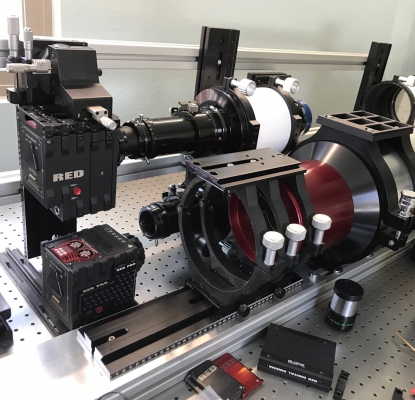
A mono RED camera on each instrument will record the eclipse at 80-frames-per-second. Recording images in RAW format allows data to be processed with a dynamic range of 24-stops: enough to capture the brightness of the chromosphere and the faint outer reaches of the corona. Processing will be done on three workstations with 24-CPU cores each. Stephen says this will be the “highest resolution still and time imagery of a solar eclipse.”
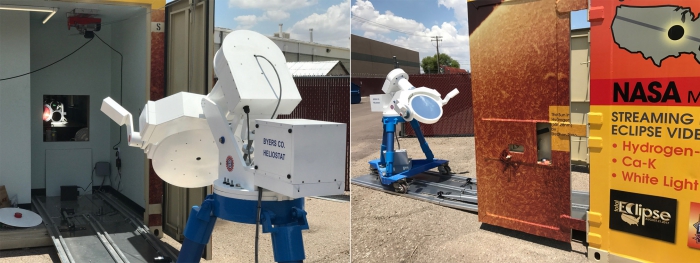
During the broadcast Stephen will be in the Lab “overseeing framing/composition, exposure and wavelength tuning. I’m also implementing the fast turn around image processing, color correction and time lapse video assembly.” He’ll be assisted by several people in this endeavor. We asked if all the light coming into the Lab would cause it to heat up to uncomfortable levels. He assured us that the coating on the optical window will reject unused wavelengths and that the facility was air conditioned.
We wish Stephen good luck and look forward to seeing his work on the NASA EDGE broadcast.
- Stephen Pizzo’s Instagram feed, @longtech.elsewhere, is loaded with his solar work.
- Total Solar Eclipse MegaCast and NASA Edge
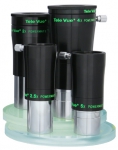
To increase the power of your favorite eyepiece, or for serious planetary / solar imaging though your scope, consider our Powermate™ amplifiers (mobile site). They increase the focal length of your scope with freedom from aberrations, greater magnification potential, and compact size. Powermate T-Ring Adapters fit on the Powermate lens assemblies to allow attachment of your camera’s T-Ring or other T-threaded imaging accessory
Did you observe, sketch, or image with Tele Vue gear? We’ll like your social media post on that if you tag it #televue and the gear used. Example:
#televue #LS230THa #powermate #solar
Do you want your Tele Vue images re-posted on Tele Vue Optics’ Social Media accounts? Use this hashtag for consideration:



